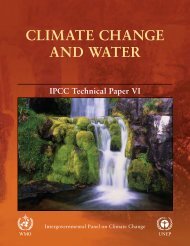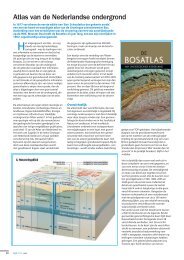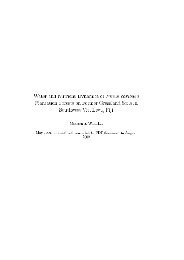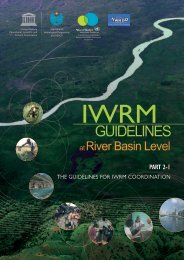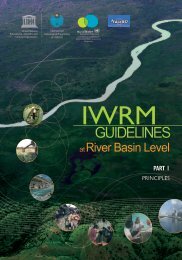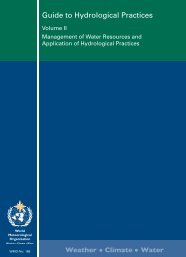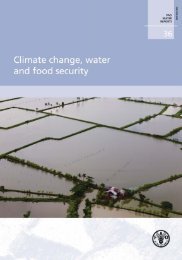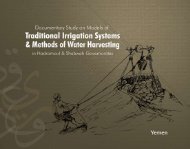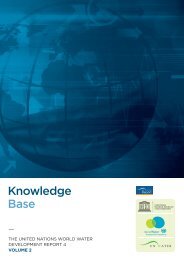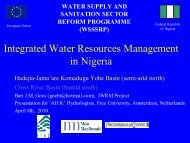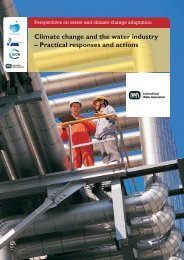Non-renewable groundwater resources: a ... - unesdoc - Unesco
Non-renewable groundwater resources: a ... - unesdoc - Unesco
Non-renewable groundwater resources: a ... - unesdoc - Unesco
- No tags were found...
You also want an ePaper? Increase the reach of your titles
YUMPU automatically turns print PDFs into web optimized ePapers that Google loves.
CHAPTER 3 ■ AQUIFER CHARACTERISATION TECHNIQUESlogical investigations. Determination of the proportions of the common stable isotopes ( 2 Hand 18 O) (Figure 6), together with radiometric dating (through 14 C, 3 H, 3 He and other determinations),can be usefully deployed for this purpose.Figure 6Characteristic isotopic composition of <strong>groundwater</strong> from some major Middle East aquifersThe stable isotope composition characteristic of <strong>groundwater</strong> from some of major aquifer systems in the Middle East(Yurtsever, 1999) – for example, the Umm Er Rhaduma and Neogene aquifers in Saudi Arabia, together with theDammam aquifer in Kuwait and the Qatar aquifers, all have low excess 2 H in relation to the present meteoric line,which is a classic palaeo-<strong>groundwater</strong> indicator, and it has been confirmed by radiometric dating that these aquiferswere mainly replenished during a humid Pleistocene episode.The composition of certain radioisotopes ( 14 C, 3 H, 3 He) can provide a specific indicatorthat, under favourable conditions, allows estimation of the age distribution of <strong>groundwater</strong> inthe aquifer system, and the potential age differentiation between shallow aquifer inputs, aquifernatural discharge and <strong>groundwater</strong> abstracted by waterwells. The residence time of <strong>groundwater</strong>in aquifer systems can range from months in very shallow aquifers of humid regions tomany thousands of years for the deep thick aquifer systems in arid areas with low recharge.Exceptional cases of fossil <strong>groundwater</strong> flow with residual flow patterns still reflecting palaeoclimaticpatterns can be seen in the extensive <strong>groundwater</strong> basins of some desert areas (notablyin North Africa), reflecting their huge <strong>groundwater</strong> storage and the large distances betweentheir paleo-recharge and discharge areas. For such cases 14 C can be a powerful investigation tool,under favourable geochemical conditions.It has been conclusively proven, through the use of environmental isotopic indicators, thatthe last major replenishment of the principal aquifers in many of today’s more arid regionsoccurred in humid climatic episodes in the Holocene and Pleistocene. The stable isotopic ( 2 Hand 18 O) signature displays consistent and significant depletion in the <strong>groundwater</strong> from theseaquifers, and this <strong>groundwater</strong> has been widely dated (using the evidence of 14 C content) as havingbeen recharged during at various intervals during the period 10,000–40,000 years BP.41





